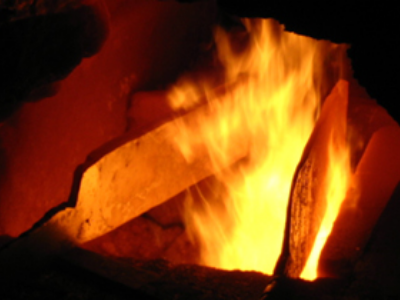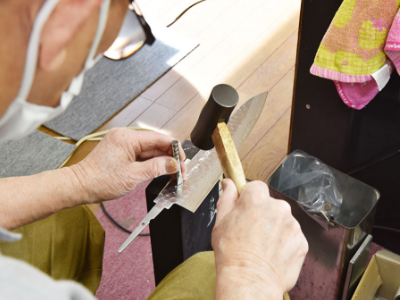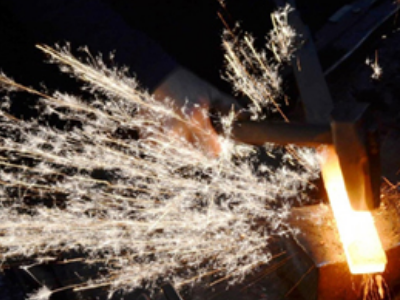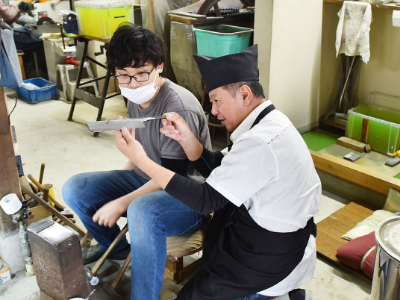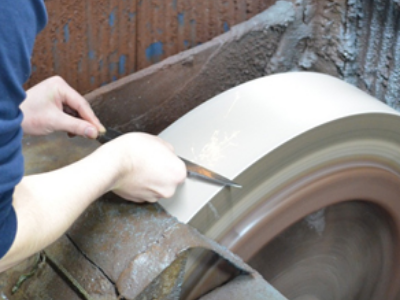How kitchen knives are made
In the production of Sakai knives, traditionally, the three processes of forging, sharpening, and attaching the handle are independent, and each process is performed by a different craftsman.
This division of labor allows craftsmen to continue to hone their specialized skills, so we can maintain excellent quality.
Forging
| forge welding | The base metal, soft iron, and blade metal (steel) are bonded together, heated and forged. |
|---|---|
| Rough beating | The forge-welded material is flattened, made uniform in thickness, and slowly cooled. |
| Rough finish | Komi and gussets are die-cut, the flat surface is shaved, and stamps are made. |
| Quenching | Heat the part that will be the cutting edge to 780-830 degrees, then soak it in water or heavy oil to cool it down. |
| Tempering | In order to prevent the blade from chipping, it is returned to the furnace at 150-190 degrees, heated, and then air-cooled. |
| Straighten out | Fix quenching distortion. |
Sharpening / handling
| Rough sharpening | First, the distortion is adjusted, and the blade is sharpened roughly with a large rotary whetstone. |
|---|---|
| Flat sharpening | After sharpening the flat part of the surface, the distortion is removed. |
| Back sharpening | Grind the back side and make a dent evenly. |
| Main sharpening | Sharpen the blade part and narrow it little by little. |
| Cloth pad | Finely grind the front and back (marks left by sharpening with a coarse whetstone) with an abrasive, etc., to bring out the overall luster. |
| Cutting edge finish | Make the shinogi stand out and sharpen the blade crest. |
| push back with small blade |
The back side is sharpened with a whetstone (square whetstone) to strengthen the cutting edge and add a small edge. |
| Patterning | Considering the balance when using, etc., the handle is removed. |
| Signature | Putting the inscription into the blade. |
| Finish | Wipe off the dirt and apply an anti-rust coating. |
